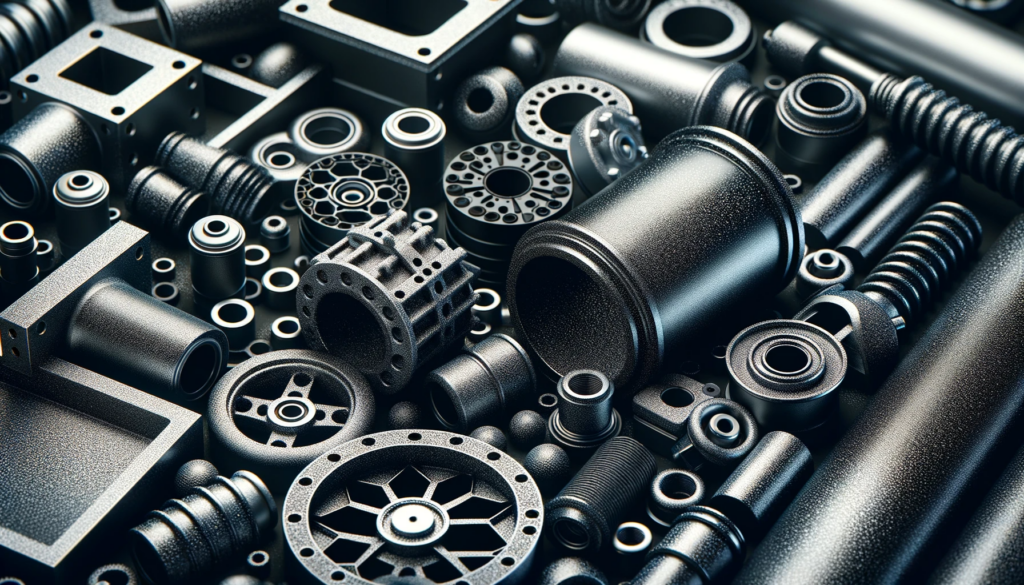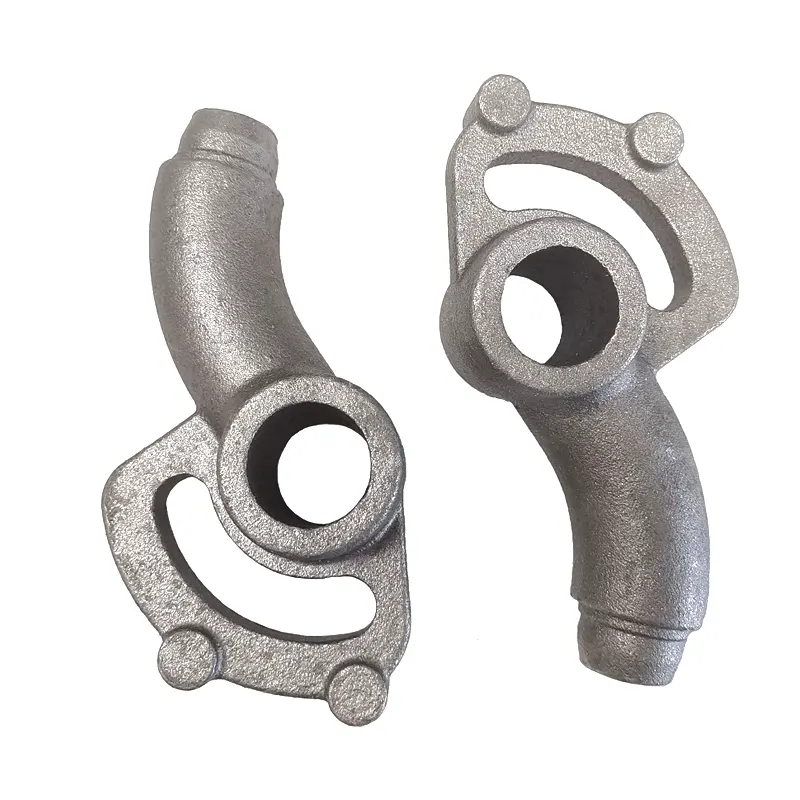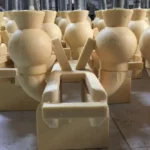Language:

Optimising Surface Finish in Manufacturing: 10 Essential Techniques Explained
Surface finishes are applied to manufactured items for various reasons, ranging from enhancing appearance and corrosion resistance to improving surface hardness and reducing friction. The choice of surface finish can profoundly impact a product’s performance, durability, and maintenance requirements. In this artile, we look into 10 common techniques used in manufacturing to achieve the desired surface qualities, each suited to specific materials and applications.
This comprehensive guide will provide insights into the techniques’ processes, applications, and the considerations behind choosing each one. This article aims to illuminate the critical role surface finishes play in the life and functionality of manufactured products.
1. Machining
Machining is achieved through various machining processes, such as milling, turning, or drilling. This type of finish is characterised by the pattern of tool marks left by the cutting tool. The quality of a machined finish depends on factors including the machine’s precision, the sharpness of the cutting tools, and the machining parameters like speed, feed rate, and depth of cut.
Applications: Machined finishes are prevalent in parts that require tight tolerances and specific surface roughness levels. They are commonly used in automotive components, aerospace parts, and mechanical assemblies where precision is crucially important. The choice of a machined finish is often dictated by the need for accurate fitment, smooth operation, and reliable performance under mechanical stress.

2. Grinding
Grinded finishes are obtained through grinding operations using abrasive wheels or belts. This process is known for producing a high-quality surface with a fine, uniform texture. Grinding can be categorised into different types, such as surface grinding, cylindrical grinding, and centerless grinding, each suited to different shapes and sizes of workpieces.
Applications: Grinded finishes are typically employed where very flat or accurate dimensions are required. They are commonly found in tools and dies, machine components, and parts that require a high level of surface smoothness and precision. In industries like automotive and metalworking, grinded finishes are crucial for components that need to withstand high levels of wear and stress.

3. Polishing
Achieving a polished finish involves using fine abrasives to create a highly smooth and often reflective surface. This process can range from basic manual buffing to more sophisticated methods involving mechanical polishers and fine-grade abrasive materials. The level of polish can vary, producing finishes from a satin-like appearance to a mirror-like shine, depending on the degree of smoothness desired.
Applications: Polished finishes are widely used in products where aesthetic appeal and surface smoothness are paramount. They are common in consumer goods like kitchenware, jewellery, and decorative items. In addition to their visual appeal, polished surfaces in industrial applications, such as in medical devices or food processing equipment, are favoured for their ease of cleaning and enhanced resistance to bacterial growth and corrosion.

4. Sandblasting
Sandblasting, also known as abrasive blasting, is a process where fine particles (such as sand) are propelled at high velocity against a surface to create a uniform, matte texture. This technique not only alters the visual appearance of the surface but can also increase its durability by creating a harder exterior layer.
Applications: Sandblasted finishes are often employed for surfaces that require a non-reflective, uniform appearance. They are commonly used to prepare metal surfaces for further treatments such as painting or coating, as the textured surface allows for better adhesion. In architecture and construction, sandblasting is used for aesthetic purposes on concrete and metal structures, and in automotive, it is used for surface preparation before painting.

5. Anodising
Anodising is an electrochemical process that enhances the natural oxide layer on the surface of metal parts, particularly aluminium. This process not only increases corrosion resistance and wear resistance but can also add vibrant colours to the metal. The anodised finish is achieved by immersing the metal in an acid electrolyte bath and passing an electric current through it, which leads to the controlled oxidation of the surface.
Applications: Anodised finishes are predominantly used in applications where both durability and aesthetic appeal are important. Common examples include consumer electronics, such as smartphones and laptops, where a protective yet attractive finish is required. In the construction industry, anodised aluminium is used for exterior cladding and in automotive for various trim components. The finish is also popular in kitchenware and outdoor equipment due to its resistance to weathering and daily wear.

6. Powder Coating
Powder coating is a finishing process where a dry powder, typically a thermoplastic or thermoset polymer, is applied electrostatically to a surface and then cured under heat to form a hard coating. This technique provides a finish that is thicker and more robust than conventional paint. Powder coatings come in a wide range of colours and textures, offering both functionality and decorative effects.
Applications: The durability and versatility of powder-coated finishes make them suitable for a wide range of applications. They are commonly used in household appliances, outdoor furniture, automotive parts, and industrial machinery. Powder coating is particularly valued in environments where parts are exposed to harsh conditions, as it provides excellent resistance to corrosion, heat, impact, and fading.

7. Electroplating
Electroplating is a process where a thin layer of one metal is deposited onto the surface of another metal via an electrochemical reaction. Common plating materials include nickel, chrome, and gold. The resulting electroplated finish can enhance a part’s appearance, corrosion resistance, electrical conductivity, and wear resistance. The thickness of the plated layer can be precisely controlled, allowing for consistent quality across parts.
Applications: Electroplated finishes are widely used in industries where both functionality and aesthetics are key. In the automotive sector, chrome plating is frequently used for decorative trims and components for its lustrous appearance and durability. In electronics, gold plating is employed for connectors and circuit boards due to its excellent conductivity and resistance to corrosion. Additionally, electroplating is used in the manufacturing of jewellery and various household fixtures and fittings.

8. Brushing
Description: A brushed finish is achieved by polishing the metal with a fine-bristled brush, creating a texture characterised by a pattern of fine lines. This finish is less reflective than a polished finish and can help in concealing fingerprints and minor surface imperfections. The brushed technique is often used on stainless steel but can be applied to other metals as well.
Applications: The aesthetic appeal and practicality of brushed finishes make them a popular choice in both consumer and industrial products. In the home, brushed finishes are often seen on kitchen appliances, sinks, and hardware, providing a modern look that is easier to maintain than a highly polished surface. In the architectural field, brushed metal is used for decorative panels and facades, offering a sophisticated and contemporary finish that is both durable and visually appealing.

9. Shot Peening
Shot peening is a surface finishing process where small spherical media, such as steel, glass, or ceramic beads, are blasted at high speed onto the surface of a part. This action creates a compressive stress layer and modifies the mechanical properties of the surface. Shot peening is primarily used to increase fatigue strength and resistance to stress corrosion cracking by inducing beneficial compressive stresses and relieving tensile stresses.
Applications: The shot peening process is extensively used in the aerospace and automotive industries for components that are subjected to high stress and fatigue, such as gears, springs, and turbine blades. It is also employed in the manufacturing of medical implants to improve their lifespan and wear characteristics. The process is crucial for parts that require enhanced durability and resistance to failure under repetitive loading.

10. Chemical Finish
Chemical finishing involves various processes that chemically alter the surface of a material. Common methods include pickling, passivation, and chemical etching. Pickling removes surface impurities and oxide scales, while passivation, often used for stainless steel, enhances corrosion resistance by forming a protective oxide layer. Chemical etching, on the other hand, uses acids or other chemicals to remove material selectively to create a specific texture or pattern.
Applications: Chemical finishes are employed across a range of industries for different purposes. Pickling and passivation are widely used in the metal industry to prepare surfaces for further processing or to prolong the lifespan of products. Chemical etching is utilised in the electronics industry for circuit board production and in metalworking for decorative etching and precise component fabrication.
Conclusion
As we conclude our exploration of the diverse world of surface finishing techniques in manufacturing, it becomes abundantly clear that the choice of surface finish plays a critical role in determining the functionality, durability, and aesthetic appeal of manufactured products. From the resilience imbued by shot peening to the intricate patterns achieved through chemical finishing, each method offers unique benefits and applications.
In the realm of bespoke manufacturing solutions, Taiyuan Simis Investment Casting Co., Ltd stands as a paragon of versatility and expertise. Simis harnesses these diverse surface finishing techniques to meet the exacting requirements of their clients, ensuring that each product not only meets the desired specifications but also exhibits the highest standards of quality and performance.
Whether it is the precision of a polished finish for medical devices, the robustness of a shot-peened component for aerospace applications, or the intricate detailing of a chemically etched part, Simis has the capability and expertise to deliver. Their commitment to utilising the most suitable surface finishing techniques is a testament to their dedication to customer satisfaction and manufacturing excellence.
In summary, the world of surface finishes is complex and multifaceted, yet essential in the field of manufacturing. Companies like Taiyuan Simis Investment Casting Co., Ltd, with their comprehensive understanding and application of these techniques, demonstrate the importance of surface finishing in bringing high-quality, durable, and aesthetically pleasing products to a wide array of industries.






